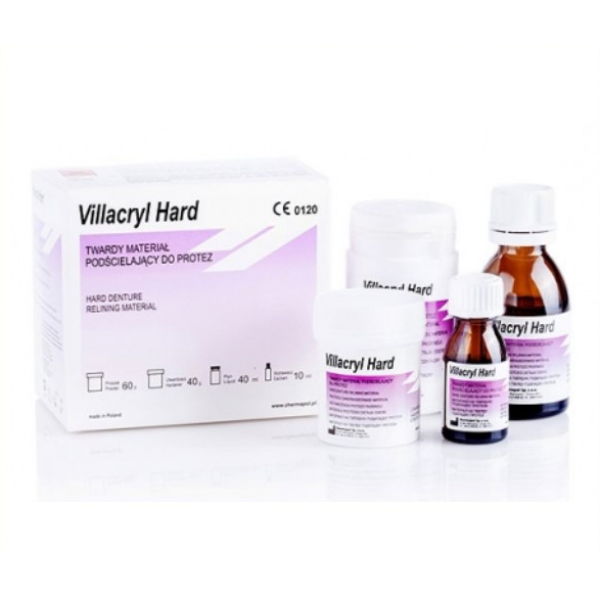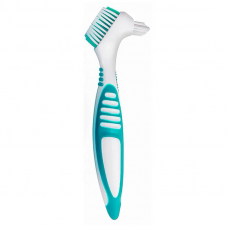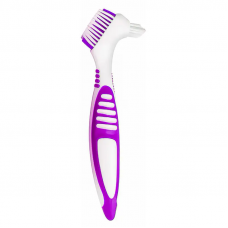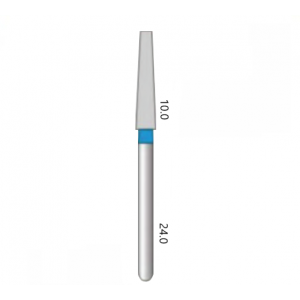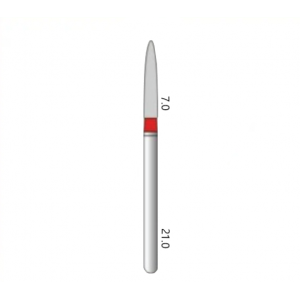Villacryl Hard is a self-polymerizing methacrylate material intended for the manufacture of hard substrates for the bases of removable prostheses directly in the patient's oral cavity.
Advantages:
convenient for use in a dentist's office,
short time and low temperature (37°C) of self-polymerization,
easy to prepare and process,
does not contain heavy metals,
the prosthesis becomes more comfortable for the patient
Purpose: for the production of hard substrates for complete and partial removable prostheses.
Color: T4 - pink.
WARNING:
The drug contains 1,6 dimethacrylate of hexanediol and methacrylate of acetoacetic ethyl ether. Do not use the drug in case of sensitivity to its components and inflammation of the mucous membrane.
Making linings in the dental office
1. Preparation
The part of the prosthesis that touches the mucous membrane should be processed with a milling cutter. If a high lining is required, it is necessary to make retention channels that improve the mass distribution on the surface of the prosthesis. Using a brush, coat the mucous membrane of the prosthesis twice with Villacryl Hard E tchant stain and wait 2-3 minutes.
2. Dosing and mixing
Recommended mixing ratio: 2.2 g of powder (1 measure) per 1.22 m (1.4 ml) of liquid. Mix gently for ≈ 10 seconds.
3. Application
Immediately after kneading, apply the mass to the prepared place on the prosthesis. To avoid adhesion of Villacryl Hard to the tissues during insertion of the prosthesis into the oral cavity, it is necessary to ask the patient to wet (lick) the lips.
4. Installation in the patient's mouth
The prosthesis must be installed in the oral cavity no later than 1.5 minutes after mixing the components. The patient should make the same jaw movements as during the removal of the functional cast (Herbst movement). The prosthesis must be kept in the mouth for 3 minutes. Let's assume the appearance of a feeling of bitter taste. Carefully remove the prosthesis from the mouth and, using a scalpel dipped in liquid (monomer), remove excess material. The patient rinses his mouth.
5. Polymerization
Place the prosthesis with the lining in water with a temperature of 50-60°C for ≈ 30 minutes, adding the drug Hardener (0.5 scoops approx. 2 g per glass of 200 ml water).
6. Processing
Allow the material to harden, then process and polish the prosthesis with cutters and erasers for acrylics.
Substrate production in the laboratory
1. Preparation
After removing the functional cast with silicone mass of the Thixoflex or Elite HD type on the prosthesis, cast a plaster model (Stodent III or Stodent IV). To fix the height of the bite, it is necessary to prepare a silicone block of the manufactured model using Zetalabor. Remove the impression material and prepare the surface of the prosthesis in such a way that the future layer of the Villacryl Hard substrate is of the same thickness. Apply Villacryl Hard Etchant twice with a brush to the mucous membrane of the prosthesis and wait until it completely evaporates. Insulation of the plaster model should be performed with Izo-sol.
2. Dosing and mixing
Recommended mixing ratio: 2.2 g of powder (1 measure) per 1.22 m (1.4 ml) of liquid. Knead carefully for ≈ 10 seconds.
3. Installation
Immediately after mixing, apply the mass to the prepared surface of the prosthesis. Place the prosthesis on a pre-insulated model, press and fix with a block. Remove excess material with a scalpel.
4. Polymerization
Put the prosthesis with the model in the polymerizer in water with a temperature of ≈ 60°C for 15-20 minutes under a pressure of 2 bar, adding the Hardener (0.5 scoops of approx. 2 g per glass of 200 ml water).
5. Processing
After the material has hardened, process and polish the prosthesis with cutters and erasers for acrylics.
WARNING:
Different types of diet, taking certain medications, as well as certain methods of care (disinfection and cleaning) for the prosthesis can cause the lining layer to change its color slightly after a few months.
Precautions
The prosthesis is ready for use after boiling for 30 minutes in water;
Inform the patient that after the first 5-7 days the prosthesis should be kept in boiled water or an aqueous solution of a disinfectant.
May cause eye, respiratory and skin irritation.
May cause skin irritation when in contact with it.
If the material gets into the eyes, rinse the eyes thoroughly with water and consult a doctor.
Avoid inhalation of monomer vapors. Work in a well-ventilated area.
Wash the area of contact with the skin thoroughly with soap and water. In case of skin inflammation caused by contact of the drug with the skin, consult a doctor.
If the monomer accidentally enters the esophagus, call a doctor immediately.
Toxic to the aquatic environment. May cause long-term adverse changes in the aquatic environment. Do not pour into the sewer.
The possibility of transmission of infection. Before installing the prosthesis in the patient's mouth, it is necessary to disinfect it.
In the case of hypersensitive patients to the components of the drug, it is necessary to use a long exposure of the prosthesis in hot water.
Storage conditions and other information
Storage conditions
Store in a dark and well-ventilated room at a temperature of 5-25°C in a place inaccessible to children. Do not use the drug after the expiration date.
Packaging: The main commercial packaging contains 60 g of powder, 40 ml of liquid, 10 ml of impregnation, 40 g of hardener.
There are no reviews for this product, be the first to leave your review.

No questions about this product, be the first and ask your question.

